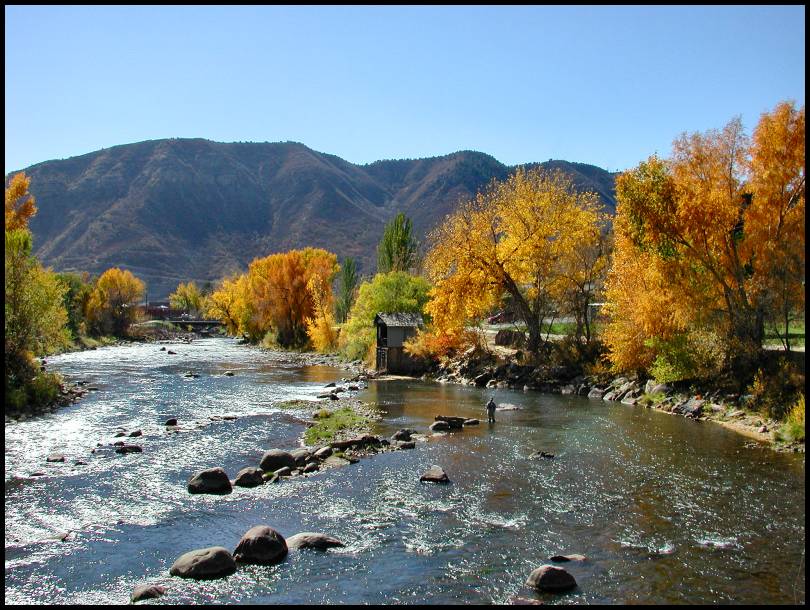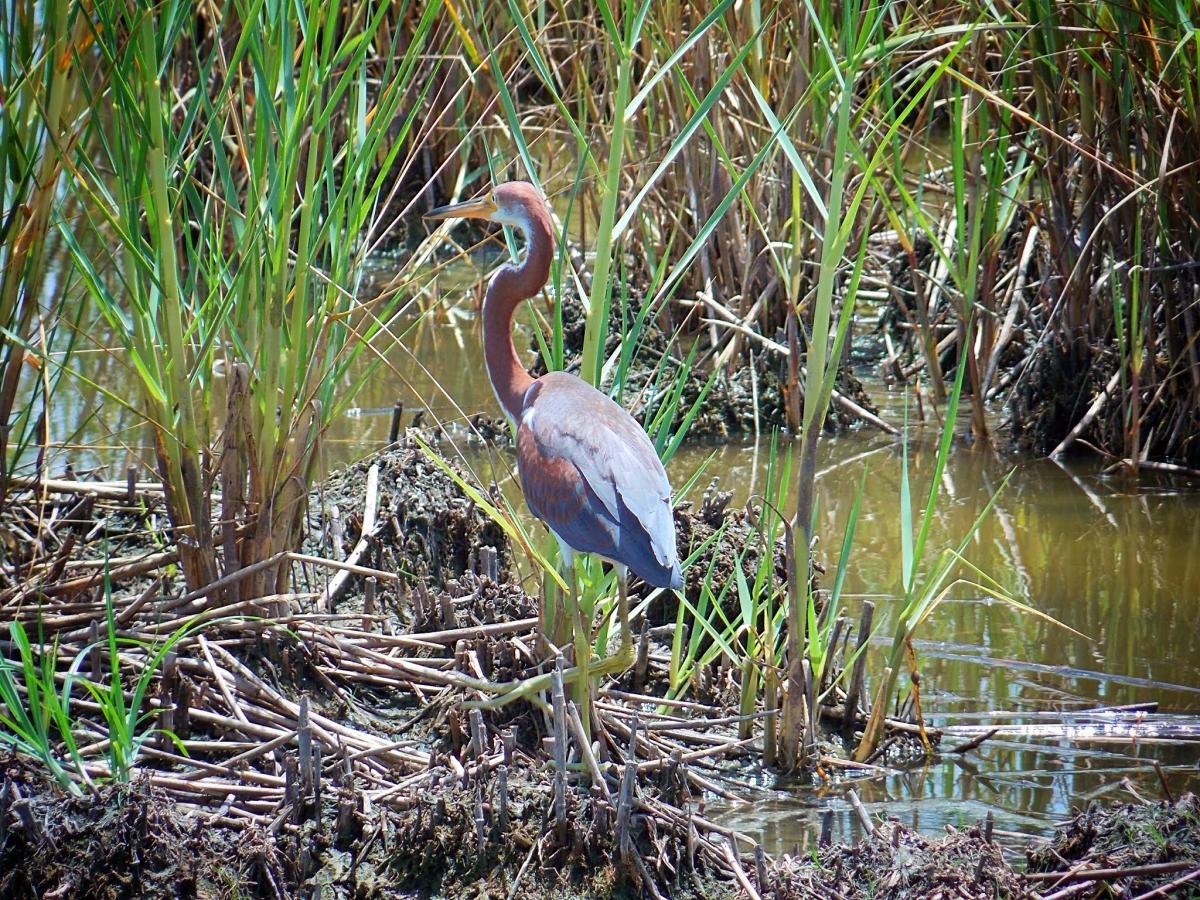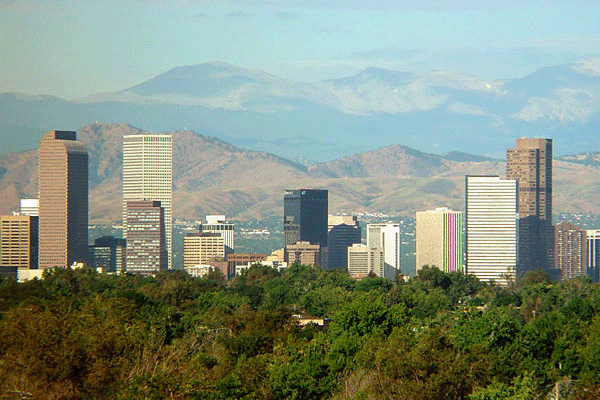You are here
Conservation Benefits
Water security is increasingly unpredictable due to growing human populations, future climate projections and prolonged drought throughout much of the Unites States. Conservation is a major way that we can ensure our water supply lasts for future generations. Making small changes will impact more than just our own water supply—they will improve recreation opportunities, wildlife habitat, and more!
Flowing Rivers
 For water conservation ideas go to: How to Conserve: Indoors and How to Conserve: Outdoors.Water is diverted from rivers throughout the U.S. for various human uses. As we demand more water for our communities, less is able to stay instream and support the aquatic species that live in the water along with the riparian species that live along the stream banks. Through efficiency innovations and conservation efforts, more water can remain instream to support river flows and the human and wildlife communities that depend on them. These rivers in return are able to continue providing us with water to drink and the picturesque scenery we enjoy.
For water conservation ideas go to: How to Conserve: Indoors and How to Conserve: Outdoors.Water is diverted from rivers throughout the U.S. for various human uses. As we demand more water for our communities, less is able to stay instream and support the aquatic species that live in the water along with the riparian species that live along the stream banks. Through efficiency innovations and conservation efforts, more water can remain instream to support river flows and the human and wildlife communities that depend on them. These rivers in return are able to continue providing us with water to drink and the picturesque scenery we enjoy.
Recreation
 Many outdoor activities are directly dependent on water resources. Fishing and boating are two obvious water-related recreational activities, but hunting, bird watching, hiking and camping also have ties to water resources. All outdoor recreation is linked to water either because water must be physically present to support the activity, is needed to sustain the activity’s environment, or was required to create the location in the first place. Whether it is camping in the Grand Canyon or fishing at a local creek, conserving water for the natural environment makes our recreational activities possible.
Many outdoor activities are directly dependent on water resources. Fishing and boating are two obvious water-related recreational activities, but hunting, bird watching, hiking and camping also have ties to water resources. All outdoor recreation is linked to water either because water must be physically present to support the activity, is needed to sustain the activity’s environment, or was required to create the location in the first place. Whether it is camping in the Grand Canyon or fishing at a local creek, conserving water for the natural environment makes our recreational activities possible.
Not only do water resources make our communities more livable—they also add value. Outdoor recreation contributes over a billion dollars to Arizona’s economy every year! This revenue is generated by everything from hunting permits to recreational fees to lodging for recreational tourists and supports local economies where the recreational opportunities exist. The West has an abundance of water-related recreational opportunities that attract visitors from around the world. Conserving water reduces the demands we place on our precious resources leaving more instream for recreation and, in turn, economic benefits.
STREAMSIDE VEGETATION & Wildlife Habitat
For the small land area that rivers and riparian areas o ccupy, they play a significant role in protecting our water resources. Riparian vegetation (vegetation adjacent to waterways) is part of an iconic image of a healthy river or stream. This vegetation serves many functions, ranging from providing cool, shady habitats for wildlife to improving water quality. Without vegetation to shade water bodies and control stream temperature or to help stabilize banks to prevent erosion, stream banks would be barren places. Waterways and their adjacent corridors, known as riparian areas, are utilized by over 50% of resident wildlife species. These narrow strips of land covered with lush vegetative canopies provide wildlife with abundant water, food and shelter, unlike the surrounding drier, upland environments. Diverse riparian vegetation is the cornerstone of a healthy ecosystem, but these plant species only exist if there is water in the stream. In turn, wildlife diversity depends on plentiful streamside vegetation and conserving water helps ensure that our ecosystems thrive.
ccupy, they play a significant role in protecting our water resources. Riparian vegetation (vegetation adjacent to waterways) is part of an iconic image of a healthy river or stream. This vegetation serves many functions, ranging from providing cool, shady habitats for wildlife to improving water quality. Without vegetation to shade water bodies and control stream temperature or to help stabilize banks to prevent erosion, stream banks would be barren places. Waterways and their adjacent corridors, known as riparian areas, are utilized by over 50% of resident wildlife species. These narrow strips of land covered with lush vegetative canopies provide wildlife with abundant water, food and shelter, unlike the surrounding drier, upland environments. Diverse riparian vegetation is the cornerstone of a healthy ecosystem, but these plant species only exist if there is water in the stream. In turn, wildlife diversity depends on plentiful streamside vegetation and conserving water helps ensure that our ecosystems thrive.
Aquifer Recharge
Aquifers are naturally occurring water storage systems that form when the empty space within porous underground soil or rock is saturated with water. Water can enter an aquifer through natural recharge (rainfall and infiltration) or artificial recharge (manmade injections and intentional slowing and detention of water to encourage infiltration). Similarly, water can naturally exit an aquifer (via pressure in the form of artesian wells or outflow to a stream where the water table connects with the ground surface) or through human influence (groundwater pumping). Streams are the connection between surface water and groundwater resources and use of these interrelated resources may impact one another. Overpumping of groundwater may decrease streamflow, while diverting surface water can lead to water table declines. Conversely, targeted groundwater recharge may increase streamflows and maintaining perennial streams contributes to aquifer storage. Lessening demand through conservation can reduce stress on our aquifers both in terms of its overall lifetime and physical viability. (See “Aquifers” for more information).
Urban Greenspace
 |
| Denver, Colorado |
Water in our urban environments is just as important as in our remote natural environments. These waterways and green spaces provide habitat for wildlife and a respite for urban dwellers without venturing too far from home. These greenspaces provide parks for children to play, community gathering spaces, wildlife sightings and the simplicity of enjoying the outdoors. These spaces, just like rivers and streams, require water to thrive and provide us an opportunity to see how our water conservation efforts directly benefit our community's natural resources.

